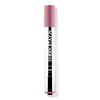What's inside
What's inside
 Key Ingredients
Key Ingredients

 Benefits
Benefits

 Concerns
Concerns

 Ingredients Side-by-side
Ingredients Side-by-side

Water
Skin ConditioningCyclopentasiloxane
EmollientOctyldodecanol
EmollientPropylene Glycol
HumectantCaprylic/Capric Triglyceride
MaskingMica
Cosmetic ColorantGlycerin
HumectantCetyl PEG/PPG-10/1 Dimethicone
EmulsifyingDimethicone
EmollientPolymethylsilsesquioxane
Bis-Diglyceryl Polyacyladipate-2
EmollientIsododecane
EmollientPolyglyceryl-3 Diisostearate
EmulsifyingSorbitan Sesquioleate
EmulsifyingDimethicone Crosspolymer
Emulsion StabilisingSodium Chloride
MaskingSilica
AbrasiveIsononyl Isononanoate
EmollientCI 77891
Cosmetic ColorantCI 15850
Cosmetic ColorantCI 77007
Cosmetic ColorantCI 77492
Cosmetic ColorantPolyglutamic Acid
Skin ConditioningDisteardimonium Hectorite
StabilisingMagnesium Stearate
Cosmetic ColorantCetearyl Ethylhexanoate
EmollientSqualane
EmollientSilica Dimethyl Silylate
EmollientPropanediol
SolventSorbitan Isostearate
EmulsifyingPortulaca Oleracea Extract
Skin ConditioningPhenoxyethanol
PreservativeAloe Barbadensis Flower Extract
EmollientCentella Asiatica Leaf Extract
Skin ConditioningChamomilla Recutita Flower Extract
MaskingTriethoxycaprylylsilane
Sucrose Cocoate
EmulsifyingPalmitoyl Tripeptide-38
Skin Conditioning1,5-Pentanediol
SolventHydroxyacetophenone
AntioxidantCeramide AP
Skin Conditioning1,2-Hexanediol
Skin ConditioningWater, Cyclopentasiloxane, Octyldodecanol, Propylene Glycol, Caprylic/Capric Triglyceride, Mica, Glycerin, Cetyl PEG/PPG-10/1 Dimethicone, Dimethicone, Polymethylsilsesquioxane, Bis-Diglyceryl Polyacyladipate-2, Isododecane, Polyglyceryl-3 Diisostearate, Sorbitan Sesquioleate, Dimethicone Crosspolymer, Sodium Chloride, Silica, Isononyl Isononanoate, CI 77891, CI 15850, CI 77007, CI 77492, Polyglutamic Acid, Disteardimonium Hectorite, Magnesium Stearate, Cetearyl Ethylhexanoate, Squalane, Silica Dimethyl Silylate, Propanediol, Sorbitan Isostearate, Portulaca Oleracea Extract, Phenoxyethanol, Aloe Barbadensis Flower Extract, Centella Asiatica Leaf Extract, Chamomilla Recutita Flower Extract, Triethoxycaprylylsilane, Sucrose Cocoate, Palmitoyl Tripeptide-38, 1,5-Pentanediol, Hydroxyacetophenone, Ceramide AP, 1,2-Hexanediol
Isododecane
EmollientHydrogenated Polyisobutene
EmollientHydrogenated Styrene/Isoprene Copolymer
Silica
AbrasiveTrimethylsiloxysilicate
EmollientMica
Cosmetic ColorantCaprylic/Capric Triglyceride
Masking1,2-Hexanediol
Skin ConditioningCaprylyl Glycol
EmollientTriethoxycaprylylsilane
Pentaerythrityl Tetra-Di-T-Butyl Hydroxyhydrocinnamate
AntioxidantCI 77891
Cosmetic ColorantIron Oxides
CI 42090
Cosmetic ColorantCI 15850
Cosmetic ColorantCI 45410
Cosmetic ColorantIsododecane, Hydrogenated Polyisobutene, Hydrogenated Styrene/Isoprene Copolymer, Silica, Trimethylsiloxysilicate, Mica, Caprylic/Capric Triglyceride, 1,2-Hexanediol, Caprylyl Glycol, Triethoxycaprylylsilane, Pentaerythrityl Tetra-Di-T-Butyl Hydroxyhydrocinnamate, CI 77891, Iron Oxides, CI 42090, CI 15850, CI 45410
 Reviews
Reviews

Ingredients Explained
These ingredients are found in both products.
Ingredients higher up in an ingredient list are typically present in a larger amount.
1,2-Hexanediol is a synthetic liquid and another multi-functional powerhouse.
It is a:
- Humectant, drawing moisture into the skin
- Emollient, helping to soften skin
- Solvent, dispersing and stabilizing formulas
- Preservative booster, enhancing the antimicrobial activity of other preservatives
This ingredient is an emollient, solvent, and texture enhancer. It is considered a skin-softener by helping the skin prevent moisture loss.
It helps thicken a product's formula and makes it easier to spread by dissolving clumping compounds.
Caprylic Triglyceride is made by combining glycerin with coconut oil, forming a clear liquid.
While there is an assumption Caprylic Triglyceride can clog pores due to it being derived from coconut oil, there is no research supporting this.
Learn more about Caprylic/Capric TriglycerideCi 15850 is the pigment color red. It is an azo dye and created synthetically.
Azo dyes need to be thoroughly purified before use. This allows them to be more stable and longer-lasting.
This ingredient is common in foundations, lipsticks, and blushes. This color is described as brown/orangey red.
It has many secondary names such as Red 6 and Red 7. According to a manufacturer, Red 6 usually contains aluminum.
Learn more about CI 15850Ci 77891 is a white pigment from Titanium dioxide. It is naturally found in minerals such as rutile and ilmenite.
It's main function is to add a white color to cosmetics. It can also be mixed with other colors to create different shades.
Ci 77891 is commonly found in sunscreens due to its ability to block UV rays.
Learn more about CI 77891Isododecane is a fragrance, emollient, and solvent.
As an emollient, it helps your skin stay soft and hydrated. Emollients help trap moisture into your skin.
Isododecane's role as a solvent makes it a great texture enhancer. It spreads smoothly on skin and does not leave a sticky feeling behind. Isododecane also helps prevent color transfer in makeup products.
Isododecane is not absorbed into skin.
Learn more about IsododecaneMica is a naturally occurring mineral used to add shimmer and color in cosmetics. It can also help improve the texture of a product or give it an opaque, white/silver color.
Serecite is the name for very fine but ragged grains of mica.
This ingredient is often coated with metal oxides like titanium dioxide. Trace amounts of heavy metals may be found in mica, but these metals are not harmful in our personal products.
Mica has been used since prehistoric times throughout the world. Ancient Egyptian, Indian, Greek, Roman, Aztec, and Chinese civilizations have used mica.
Learn more about MicaSilica, also known as silicon dioxide, is a naturally occurring mineral. It is used as a fine, spherical, and porous powder in cosmetics.
Though it has exfoliant properties, the function of silica varies depending on the product.
The unique structure of silica enhances the spreadability and adds smoothness, making it a great texture enhancer.
It is also used as an active carrier, emulsifier, and mattifier due to its ability to absorb excess oil.
In some products, tiny microneedles called spicules are made from silica or hydrolyzed sponge. When you rub them in, they lightly polish away dead skin layers and enhance the penetration of active ingredients.
Learn more about SilicaTriethoxycaprylylsilane is a silicone used to bind and stabilize ingredients.
As an emulsifier, it helps prevent ingredients from separating. This can help elongate the shelf life of products.
Triethoxycaprylylsilane is often used to coat mineral sunscreens ingredients to help give a better feel. It also helps reduce oxidative stress in sunscreens.
Learn more about Triethoxycaprylylsilane